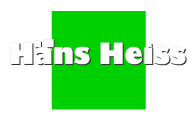
EYE SEE YOU
Learning Center

Learning Center
LENSMETER O LENSOMETER In 1876, Hermann Snellen introduced a phakometer which was a similar set up to an optical bench which could measure the power and find the optical centre of a convex lens. Troppman went a step further in 1912, introducing the first direct measuring instrument. In 1922, a patent was filed for the first projection lensmeter, which has a similar system to the standard lensmeter, but projects the measuring target onto a screen eliminating the need for correction of the observer's refractive error in the instrument itself and reducing the requirement to peer down a small telescope into the instrument. Despite these advantages the CLASIC design is still predominant in the optical world WHAT IS A LENSMETER A lensmeter or lensometer, also known as a focimeter, is an ophthalmic instrument. It is mainly used by optometrists and opticians to verify the correct prescription in a pair of eyeglasses, to properly orient and mark uncut lenses, and to confirm the correct mounting of lenses in spectacle frames. Lensmeters can also verify the power of contact lenses, if a special lens support is used. A lensmeter is an essential piece of equipment for the eye care professional. This instrument measures the power of spectacle and contact lenses and is one of the first purchases we make when setting up a practice. Whether manual or automatic, lensmeters function by neutralizing the power of the lens being measured and then displaying the resulting prescription. Specifically, lensmeters utilize a telescope to detect the neutralization point: the distance measurement is determined from the back vertex power, the add measurement is taken from the front vertex power, and any prism measurement is derived from displacement of the target pattern. The automatic devices, which are easier to use and have many additional bells and whistles, will be the focus of this article. Here are some of the latest lensmeters from HANS HEISS: Auto Lensmeter /HLM6039 Digital color LCD screen lensmeter with automatic focusing working principle. Specifications Measurement range: Spherical power (spectacle lens) -25D~+25D Spherical power (spectacle lens) -25D~+25D Cylindrical power -9.99D~+9.99 ADD power -9.99D~+9.99D Spherical power(contact lens): -25D~+25D Axis: 0~180° Prism power: 0~-20△ (horizontal/vertical direction) Prism power representation △ ,θBase in/out,Base up/down Applicable lenses: φ20mm~φ100mm diameter ; ≤20mm center thickness PD and PH measurement: PD=42mm ~99mm Thermal line printer: Width: 57mm Display: TFT color LCD Interface connectors: RS232 Auto lensmeter HLM6038 Features Digital display and touch screen lenemeter with automatic focusing working principle. Power adaptar is configurated to main device. Specifications Measurement range: Spherical power (spectacle lens)-25D~+25D Cylindrical power -9.99D~+9.99 ADD power: -9.99D~+9.99D Spherical power(contact lens): -20D~+20D Axis: 0~180°Prism basal angle: 0~360°, steps 1° Prism power: 0~15△△ (horizontal/vertical direction) Prism power representation: “P—B” and “UD/IO” represents two modes, (△、θ)represents “P—B” mode;(Base in/out,Base up/down)represent “UD/IO” mode Applicable lenses: φ10mm~φ90mm diameter ; ≤20mm center thickness Applicable frame leg length: 0~158mm PD and PH measurement: PD=42mm ~82mm Thermal line printer: (Width: 57mm) Display: TFT color and touch LCD Interface connectors: USB, RS232